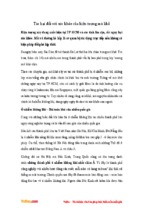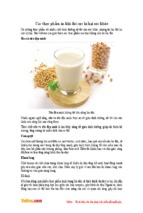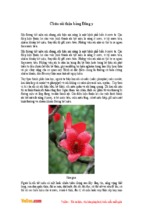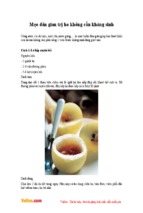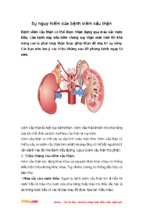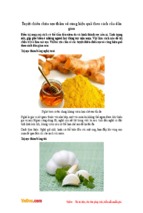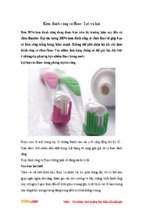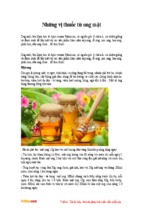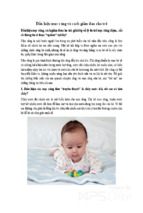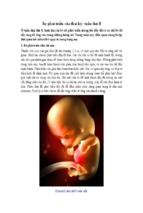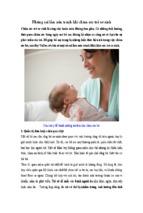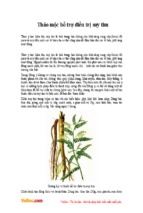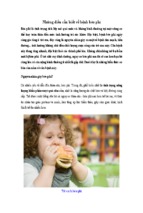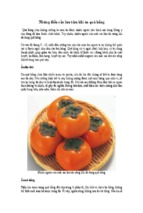THE FAMILIES
AND GENERA
OF VASCULAR PLANTS
Edited by K. Kubitzki
Volumes published in this series
Volume I
Pteridophytes and Gymnosperms
Edited by K.U. Kramer and P.S. Green (1990)
Date of publication: 28.9.1990
Volume II
Flowering Plants. Dicotyledons. Magnoliid, Hamamelid
and Caryophyllid Families
Edited by K. Kubitzki, J.G. Rohwer, and V. Bittrich (1993)
Date of publication: 28.7.1993
Volume III
Flowering Plants. Monocotyledons: Lilianae (except Orchidaceae)
Edited by K. Kubitzki (1998)
Date of publication: 27.8.1998
Volume IV
Flowering Plants. Monocotyledons: Alismatanae and Commelinanae
(except Gramineae)
Edited by K. Kubitzki (1998)
Date of publication: 27.8.1998
Volume V
Flowering Plants. Dicotyledons: Malvales, Capparales and Non-betalain
Caryophyllales
Edited by K. Kubitzki and C. Bayer (2003)
Date of publication: 12.9.2002
Volume VI
Flowering Plants. Dicotyledons: Celastrales, Oxalidales, Rosales, Cornales,
Ericales
Edited by K. Kubitzki (2004)
Date of publication: 21.1.2004
Volume VII
Flowering Plants. Dicotyledons: Lamiales (except Acanthaceae including
Avicenniaceae)
Edited by J.W. Kadereit (2004)
Date of publication: 13.4.2004
Volume VIII Flowering Plants. Eudicots: Asterales
Edited by J.W. Kadereit and C. Jeffrey (2007)
The Families
and Genera
of Vascular Plants
Edited by K. Kubitzki
VIII
Flowering Plants · Eudicots
Asterales
Volume Editors:
J.W. Kadereit and C. Jeffrey
With 131 Figures
123
Professor Dr. Klaus Kubitzki
Universität Hamburg
Biozentrum Klein-Flottbek und Botanischer Garten
Ohnhorststraße 18
22609 Hamburg
Germany
Professor Dr. Joachim W. Kadereit
Johannes Gutenberg-Universität Mainz
Institut für Spezielle Botanik und Botanischer Garten
55099 Mainz
Germany
Charles Jeffrey
flat 91, block 5, pr. Morisa Toreza 102
194017 St. Petersburg
Russia
Library of Congress Control Number: 2006924681
ISBN-10 3-540-31050-9 Springer Berlin Heidelberg New York
ISBN-13 978-3-540-31050-1 Springer Berlin Heidelberg New York
This work is subject to copyright. All rights are reserved, whether the whole or part of the material is concerned, specifically
the rights of translation, reprinting, reuse of illustrations, recitation, broadcasting, reproduction on microfilm or in any
other way, and storage in data banks. Duplication of this publication or parts thereof is permitted only under the provisions
of the German Copyright Law of September 9, 1965, in its current version, and permissions for use must always be obtained
from Springer-Verlag. Violations are liable for prosecution under the German Copyright Law.
Springer is a part of Springer Science+Business Media
springer.com
© Springer-Verlag Berlin Heidelberg 2007
The use of general descriptive names, registered names, trademarks, etc. in this publication does not imply, even in the
absence of a specific statement, that such names are exempt from the relevant protective laws and regulations and therefore
free for general use.
Cover design: WMXDesign, Heidelberg, Germany
Typesetting and production: LE-TEX Jelonek, Schmidt & Vöckler GbR, Leipzig, Germany
Printed on acid-free paper
31/3150/YL – 5 4 3 2 1 0
Preface
It is a great pleasure to introduce this volume of the “Families and Genera of Vascular
Plants”, containing the treatments of Compositae and all other families of the Asterales.
In these treatments, the immense amount of evidence recently accrued has been taken
into account to present an up-to-date picture of the systematics of these groups. This
fully meets the aim of this series to distil and organise knowledge.
Compositae have always been in the focus of plant systematists, and here more
than elsewhere it is obvious how much we owe to our predecessors, of which Cassini
and Bentham may be singled out. Note, for instance, that as early as 1816 Calyceraceae
and Campanulaceae were suggested to be the closest relatives of Compositae, a concept
very similar to our present understanding. Although most of what is known about
interrelationships among organisms is based on comparative morphology, we have also
learned that morphology alone is unable to resolve all problems in systematics; for
example, the placement of Roussea or the recognition of the sister-group relationship
between Barnadesioideae and the other Compositae would never have been possible
without molecular data.
I am highly indebted to the editors of this volume, Joachim W. Kadereit and Charles
Jeffrey, for their Herculean effort in bringing the book to a successful end, and this
despite several obstacles. Moreover, deep appreciation is due to those who have provided
the scholarly and meticulous treatments assembled in this volume. Kåre Bremer is
acknowledged for invaluable advice on the selection of potential authors given during
early stages of this work. We are grateful to Linda Klöckner for the editing of the figures,
and to Sabine von Mering, Miriam Repplinger and Christian Uhink for their assistance
in the assembly of the final manuscript of Compositae. Our thanks also go to Monique
Delafontaine who so ably copy-edited the book. Special thanks are due to the copyright
holders of published illustrations who so generously permitted the inclusion of their
valuable material in the present volume.
Finally, it is a pleasure to acknowledge the agreeable collaboration with the staff of
Springer-Verlag who so willingly responded to all requests raised in connection with
planning and production.
Hamburg, August 2006
K. Kubitzki
Contents
Asterales: Introduction and Conspectus
J.W. Kadereit . . . . . . . . . . . . . . . . . . . . .
1
Alseuosmiaceae
J. Kårehed . . . . . . . . . . . . . . . . . . . . . . . .
7
Argophyllaceae
J. Kårehed . . . . . . . . . . . . . . . . . . . . . . . .
13
Calyceraceae
F.H. Hellwig . . . . . . . . . . . . . . . . . . . . . .
19
Campanulaceae
T.G. Lammers . . . . . . . . . . . . . . . . . . . . .
26
Carpodetaceae
M.H.G. Gustafsson . . . . . . . . . . . . . . . .
57
Compositae
A.A. Anderberg, B.G. Baldwin,
R.G. Bayer, J. Breitwieser, C. Jeffrey,
M.O. Dillon, P. Eldenäs, V. Funk,
N. Garcia-Jacas, D.J.N. Hind, P.O. Karis,
H.W. Lack, G. Nesom, B. Nordenstam,
Ch. Oberprieler, J.L. Panero,
C. Puttock, H. Robinson, T.F. Stuessy,
A. Susanna, E. Urtubey, R. Vogt,
J. Ward and L.E. Watson . . . . . . . . . . . . 61
Introduction with Key to Tribes
C. Jeffrey . . . . . . . . . . . . . . . . . . . . . . . . .
61
I. Tribe Barnadesieae
T.F. Stuessy and E. Urtubey . . . . . . . . .
87
II. Tribe Mutisieae
D.J.N. Hind . . . . . . . . . . . . . . . . . . . . . . . .
90
III. Tribe Cardueae
A. Susanna and N. Garcia-Jacas . . . . . 123
Carduoid Genera
of Uncertain Placement
C. Jeffrey . . . . . . . . . . . . . . . . . . . . . . . . . 146
IV. Tribe Gymnarrheneae
C. Jeffrey . . . . . . . . . . . . . . . . . . . . . . . . . 147
V. Tribe Moquinieae
H. Robinson . . . . . . . . . . . . . . . . . . . . . . 148
VI. Tribe Vernonieae
H. Robinson . . . . . . . . . . . . . . . . . . . . . . 149
VII. Tribe Liabeae
V.A. Funk, H. Robinson and M.O. Dillon 175
VIII. Tribe Cichorieae
H.W. Lack . . . . . . . . . . . . . . . . . . . . . . . . . 180
IX. Tribe Gundelieae
C. Jeffrey . . . . . . . . . . . . . . . . . . . . . . . . . 199
X. Tribe Arctotideae
P.O. Karis . . . . . . . . . . . . . . . . . . . . . . . . . 200
XI. Tribe Corymbieae
B. Nordenstam . . . . . . . . . . . . . . . . . . . . 207
XII. Tribe Senecioneae
B. Nordenstam . . . . . . . . . . . . . . . . . . . . 208
XIII. Tribe Calenduleae
B. Nordenstam . . . . . . . . . . . . . . . . . . . . 241
viii
Contents
XIV. Tribe Gnaphalieae
R.J. Bayer, I. Breitwieser, J. Ward
and C. Puttock . . . . . . . . . . . . . . . . . . . . 246
XV. Tribe Astereae
G. Nesom and H. Robinson . . . . . . . . . . 284
XVI. Tribe Anthemideae
Ch. Oberprieler, R. Vogt
and L.E. Watson . . . . . . . . . . . . . . . . . . . 342
XVII. Tribe Inuleae
A.A. Anderberg and P. Eldenäs . . . . . 374
Key to the Tribes
of the Heliantheae Alliance
J.L. Panero . . . . . . . . . . . . . . . . . . . . . . . . 391
XVIII. Tribe Athroismeae
J.L. Panero . . . . . . . . . . . . . . . . . . . . . . . . 395
XIX. Tribe Helenieae
J.L. Panero . . . . . . . . . . . . . . . . . . . . . . . . 400
XX. Tribe Coreopsideae
J.L. Panero . . . . . . . . . . . . . . . . . . . . . . . . 406
XXI. Tribe Neurolaeneae
J.L. Panero . . . . . . . . . . . . . . . . . . . . . . . . 417
XXII. Tribe Tageteae
J.L. Panero . . . . . . . . . . . . . . . . . . . . . . . . 420
XXIII. Tribe Chaenactideae
J.L. Panero . . . . . . . . . . . . . . . . . . . . . . . . 431
XXIV. Tribe Bahieae
J.L. Panero . . . . . . . . . . . . . . . . . . . . . . . . 433
XXV. Tribe Polymnieae
J.L. Panero . . . . . . . . . . . . . . . . . . . . . . . . 439
XXVI. Tribe Heliantheae
J.L. Panero . . . . . . . . . . . . . . . . . . . . . . . . 440
XXVII. Tribe Millerieae
J.L. Panero . . . . . . . . . . . . . . . . . . . . . . . . 477
XXVIII. Tribe Madieae
B.G. Baldwin and J.L. Panero . . . . . . . . 492
XXIX. Tribe Perityleae
J.L. Panero . . . . . . . . . . . . . . . . . . . . . . . . 507
XXX. Tribe Eupatorieae
D.J.N. Hind and H. Robinson . . . . . . . . 510
Asteroid Genus
of Uncertain Placement
C. Jeffrey . . . . . . . . . . . . . . . . . . . . . . . . . 574
Selected Bibliography
to Compositae
. . . . . . . . . . . . . . . . . . . . . . . . . . . . . . . . . . 576
Goodeniaceae
R.C. Carolin . . . . . . . . . . . . . . . . . . . . . . 589
Menyanthaceae
G. Kadereit . . . . . . . . . . . . . . . . . . . . . . . 599
Pentaphragmataceae
T.G. Lammers . . . . . . . . . . . . . . . . . . . . . 605
Phellinaceae
G. Barriera, V. Savolainen
and R. Spichiger . . . . . . . . . . . . . . . . . . . 608
Rousseaceae
J.A. Koontz, J. Lundberg and D.E. Soltis 611
Stylidiaceae
R.C. Carolin . . . . . . . . . . . . . . . . . . . . . . 614
Index to Scientific Names
. . . . . . . . . . . . . . . . . . . . . . . . . . . . . . . . . . 621
List of Contributors
Anderberg, A.A.
Department of Phanerogamic Botany, Swedish Museum of
Natural History, P.O. Box 50007, 10405 Stockholm, Sweden
Baldwin, B.G.
Jepson Herbarium & Dept. of Integrative Biology,
1001 Valley Life Sciences Bldg. #2465,
University of California, Berkeley, CA 94720-2465, USA
Barriera, G.
Conservatoire et Jardin botaniques de la Ville de Genève,
1 ch. de l’Impératrice, Case postale 60, 1292 Chambésy,
Switzerland
CSIRO – Plant Industry, Australian National Herbarium,
GPO Box 1600, Canberra, ACT 2601, Australia
Bayer, R.J.
Breitwieser, I.
Biosystematics of New Zealand Plants, Manaaki Whenua –
Landcare Research, P.O. Box 69, Lincoln 8152, New Zealand
Carolin, R.C.
Pulman’s Cottage, 30 Pulman Street, Berry, N.S.W. 2535,
Australia
Department of Botany, Field Museum of Natural History,
1400 South Lake Shore Drive, Chicago, IL 60605-2496, USA
Dillon, M.O.
Eldenäs, P.
Molecular Systematics Laboratory, Swedish Museum of
Natural History, P.O. Box 50007, 10405 Stockholm, Sweden
Funk, V.A.
US National Herbarium, Department of Botany,
Smithsonian Institution, MRC 166, Washington, DC 20560,
USA
Botanic Institute of Barcelona, Passeig del Migdia s.n., Parc
de Montjuic, 08038 Barcelona, Spain
Garcia-Jacas, N.
Gustafsson, M.H.G.
Institute of Biological Sciences, University of Aarhus, Ny
Munkegade, Building 540, 8000 Århus C, Denmark
Hellwig, F.H.
Institut für Spezielle Botanik mit Botanischem Garten und
Herbarium Haussknecht, Friedrich-Schiller-Universität
Jena, Philosophenweg 16, 07743 Jena, Germany
Hind, D.J.N.
The Herbarium, Royal Botanic Gardens, Kew, Richmond,
Surrey TW9 3AE, UK
Jeffrey, C.
Flat 91, Block 5, pr. Morisa Toreza 102,
194017 St. Petersburg, Russia
Kadereit, G.
Institut für Spezielle Botanik und Botanischer Garten,
Johannes Gutenberg-Universität, 55099 Mainz, Germany
Kadereit, J.W.
Institut für Spezielle Botanik und Botanischer Garten,
Johannes Gutenberg-Universität, 55099 Mainz, Germany
x
List of Contributors
Kårehed, J.
Department of Systematic Botany, Evolutionary Biology
Centre, Norbyvägen 18D, Uppsala University,
75236 Uppsala, Sweden
Karis, P.O.
Department of Botany, Stockholm University,
10691 Stockholm, Sweden
Department of Biology, Augustana College, 639 38th Street,
Rock Island, IL 61201, USA
Botanischer Garten und Botanisches Museum BerlinDahlem, Freie Universität Berlin, Königin-Luise-Str. 6–8,
14195 Berlin, Germany
Koontz, J.A.
Lack, H.W.
Lammers, T.G.
Lundberg, J.
Nesom, G.
Nordenstam, B.
Department of Biology and Microbiology, University of
Wisconsin Oshkosh, Oshkosh, WI 54901, USA
Department of Systematic Botany, Evolutionary Biology
Centre, Uppsala University, Norbyvägen 18D,
75236 Uppsala, Sweden
Botanical Research Institute of Texas, 509 Pecan Street,
Fort Worth, TX 76102-4060, USA
Department of Phanerogamic Botany, Swedish Museum of
Natural History, P.O. Box 50007, 10405 Stockholm, Sweden
Oberprieler, Ch.
Institute of Botany, University of Regensburg,
Universitätsstr. 31, 93040 Regensburg, Germany
Panero, J.L.
Section of Integrative Biology, 1 University Station C0930,
The University of Texas, Austin, TX 78712, USA
Puttock, C.
Bishop Museum, Department of Botany, 1525 Bernice
Street, Honolulu, HI 96817-2704, USA
US National Herbarium, Department of Botany,
Smithsonian Institution, MRC 166, Washington, DC 20560,
USA
Molecular Systematics Section, Royal Botanic Gardens,
Kew, Richmond, Surrey TW9 3DS, London, UK
Robinson, H.
Savolainen, V.
Soltis, D.E.
Spichiger, R.
Stuessy, T.F.
Susanna, A.
Department of Botany, University of Florida, Gainesville,
FL 32611, USA
Conservatoire et Jardin botaniques de la Ville de Genève,
1 ch. de l’Impératrice, Case postale 60, 1292 Chambésy,
Switzerland
Department of Systematic and Evolutionary Botany,
Institute of Botany, University of Vienna, Rennweg 14,
1030 Vienna, Austria
Botanic Institute of Barcelona, Passeig del Migdia s.n., Parc
de Montjuic, 08038 Barcelona, Spain
Urtubey, E.
Division Plantas Vasculares, Museo de La Plata,
Universidad Nacional de La Plata, Paseo del Bosque s.n.,
La Plata, Argentina
Vogt, R.
Botanischer Garten und Botanisches Museum BerlinDahlem, Freie Universität Berlin, Königin-Luise-Str. 6–8,
14191 Berlin, Germany
List of Contributors
Ward, J.
School of Biological Sciences, University of Canterbury,
Private Bag 4800, Christchurch, New Zealand
Watson, L.E.
Department of Botany, Miami University, Oxford, OH
45056, USA
xi
Asterales: Introduction and Conspectus
J.W. Kadereit
Asterales (incl. Campanulales of many authors),
with Alseuosmiaceae, Argophyllaceae, Compositae (= Asteraceae), Calyceraceae, Campanulaceae
(incl. Cyphiaceae, Lobeliaceae, Nemacladaceae),
Carpodetaceae (included in Rousseaceae by
APG II 2003), Goodeniaceae, Menyanthaceae,
Pentaphragmataceae, Phellinaceae, Rousseaceae
and Stylidiaceae (incl. Donatiaceae), contain about
26,300 species in c. 1,720 genera. The large majority of species and genera belong to Compositae
and Campanulaceae. The order is well supported
in all major molecular phylogenetic analyses
(APG II 2003), and is part of the Euasterids II or
Campanulids sensu Bremer et al. (2002).
Phylogenetic structure within Campanulids
(also containing Apiales, Aquifoliales, Dipsacales
and several families of uncertain ordinal placement; APG II 2003) is not sufficiently well resolved
to identify the sister group of Asterales. It appears
to be evident, however, that of all representatives
of the Campanulids, Aquifoliales are least closely
related to Asterales (Savolainen et al. 2000a, b;
Soltis et al. 2000; Albach et al. 2001; Bremer et al.
2001, 2002).
Although several of the constituent families
of the order had been recognized to be closely
related to one another long ago (for discussion, see
Lammers 1992), the recognition of the relationship
of others to Asterales (Lundberg and Bremer
2003) is the result mainly (but not only) of recent
molecular phylogenetic work. This applies particularly to Alseuosmiaceae (Backlund and Bremer
1997; Gustafsson and Bremer 1997; Kårehed
et al. 1999; Cronquist 1981: Rosales; Thorne 1992:
Saxifragales; Takhtajan 1997: Hydrangeales), Argophyllaceae (Kapil and Bhatnagar 1992; Gustafsson
et al. 1996; Kårehed et al. 1999; Olmstead et al.
2000; Cronquist 1981: Rosales; Takhtajan 1997:
Hydrangeales), Carpodetaceae (Gustafsson and
Bremer 1997; Lundberg 2001; Takhtajan 1997: Hydrangeales), Phellinaceae (Backlund and Bremer
1997; Gustafsson and Bremer 1997; Kårehed et al.
1999; Cronquist 1981: Celastrales; Thorne 1992:
Theales; Takhtajan 1997: Icacinales) and Rousseaceae (Lundberg 2001; Takhtajan 1997: Brexiales), and partly also to Menyanthaceae (Downie
and Palmer 1992; Olmstead et al. 1992; Cronquist
1981: Solanales; Thorne 1992: Campanulales;
Takhtajan 1997: Menyanthales) and Stylidiaceae
(Cronquist 1981: Campanulales; Thorne 1992: Saxifragales; Takhtajan 1997: Stylidiales). Further sampling may identify other taxa from distant corners
of the traditional angiosperm system which should
be included in the order. On the other hand, Sphenocleaceae, as a family often associated with Asterales/Campanulales (e.g. Lammers 1992), do not
belong here but rather in Solanales (APG II 2003).
Members of Asterales are mostly herbaceous
and in most cases have alternate leaves without
stipules. Flowers are very rarely solitary but mostly
aggregated in sometimes axillary but more commonly terminal inflorescences which are capitulate
and involucrate in most of the closely related Goodeniaceae, Calyceraceae and Compositae, and also
in some Campanulaceae. The mostly zoophilous
flowers typically are tetracyclic and pentamerous
but variation of organ number per whorl is
known from several families. Flower symmetry is
actinomorphic or zygomorphic with bilabiate or
unilabiate flowers – actinomorphic and zygomorphic flowers are both found in the capitula of many
Compositae – and resupination of flowers is known
from Campanulaceae-Lobelioideae and some Stylidiaceae. The sepals are commonly fused (not in
Alseuosmiaceae and some Menyanthaceae), and
in Compositae the calyx commonly is replaced by
a pappus of variable structure assisting in fruit dispersal. Petals are free only in Carpodetaceae, Phellinaceae and some Argophyllaceae, Pentaphragmataceae and Stylidiaceae (Donatia). The androecium
normally is isomerous with calyx and corolla, and
the stamens alternate with the petals. Reduction of
stamen number is largely limited to Stylidiaceae.
Stamens can be inserted on the corolla or not, and
2
J.W. Kadereit
anthers are mostly tetrasporangiate, basifixed and
commonly introrse. Pollen grains are mostly tricolporate, but both colpate or porate pollen grains
with an increased number of apertures are known.
Carpodetus (Carpodetaceae) and Lechenaultia
(Goodeniaceae) are unusual in having pollen
tetrads. The pluri- to unilocular ovary is commonly
inferior (or semi-inferior) but superior ovaries
are found in some Carpodetaceae, some Goodeniaceae, some Campanulaceae, and in Menyanthaceae, Phellinaceae and Rousseaceae. Ovules
usually are anatropous (hemi- to campylotropous
in Phellinaceae), unitegmic and tenuinucellate
and, where known, endosperm formation is mostly
cellular, but nuclear in some Compositae. Fruits
are commonly capsules or achenes (= cypselae),
rarely berries or drupes. Inulin is found in several
families (Calyceraceae, Campanulaceae, Compositae, Goodeniaceae, Menyanthaceae and Stylidiaceae), and iridoids or seco-iridoids are common,
but absent from Campanulaceae and Compositae, and apparently also from Alseuosmiaceae,
Phellinaceae and Rousseaceae.
A tight integration of stamens and style is
found in several families. In most Stylidiaceae,
the two stamens are fused with the style to form
a pressure-sensitive gynostemium. In Calyceraceae, Campanulaceae, Compositae and Goodeniaceae, the interaction of style and either fused or
free anthers results in various forms of secondary
pollen presentation (Carolin 1960; Leins and Erbar
1990, 2003; Erbar and Leins 1995). Erbar and Leins
(1995) classified these as (1) brushing or pump
mechanism in Compositae and CampanulaceaeLobelioideae (pollen is removed from an anther
tube by the elongating style which is hairy or not),
(2) deposition (or rarely brushing) mechanism
in Campanulaceae-Campanuloideae (pollen from
free anthers is deposited on hairs on the outside of
the style, these hairs can invaginate or not), (3) cup
and cup/brushing mechanism in Goodeniaceae
(pollen is deposited in a cup-like outgrowth below
the stigma, the indusium; in addition to this cup,
hairs can be present on the style) and (4) deposition
mechanism of Goodeniaceae (deposition of pollen
grains on top of the style). Detailed summaries
of character distribution in Asterales have been
provided by Lammers (1992; excl. Alseuosmiaceae,
Argophyllaceae, Carpodetaceae, Phellinaceae,
Rousseaceae) and, covering the entire order,
particularly by Lundberg and Bremer (2003).
In spite of the very high molecular support for
the order, it is difficult to identify synapomorphies.
Following Lundberg and Bremer (2003), valvate
corolla aestivation and the absence of apotracheal
wood parenchyma can be identified as synapomorphic. Both these characters, however, are not
unique for the order and are variable within it.
Previously identified synapomorphies, such as secondary pollen presentation (which is present in the
form of different mechanisms and is likely to have
arisen more than once; see above) and the presence of inulin, are characteristic only of subgroups
of Asterales.
Relationships within the order are clear and
well supported in some parts but not in others
(Lundberg and Bremer 2003). One well-supported
clade identified in several analyses (Chase et al.
1993; Morgan and Soltis 1993; Cosner et al. 1994;
Gustafsson and Bremer 1995; Olmstead et al. 2000;
Soltis et al. 2000; Bremer et al. 2001; Lundberg and
Bremer 2003) consists of Menyanthaceae, Goodeniaceae, Calyceraceae and Compositae (MGCA
clade; Fig. 1). This clade is characterized by the
presence of petal lateral veins (Gustafsson 1995),
the loss of micropylar endosperm haustoria (Cosner et al. 1994), and a thick and multilayered (> 10
cells) integument (Inoue and Tobe 1999). Within
this clade, the sister-group relationship between
Calyceraceae and Compositae is supported by several potential synapomorphies in wood anatomical
(Carlquist and De Vore 1998), inflorescence, flower
and fruit morphological and anatomical (Hansen
1992; Gustafsson 1995), and pollen (Hansen
1992) characters. Goodeniaceae are sister to
these two families, and the clade consisting of
Goodeniaceae/Calyceraceae/Compositae may be
supported by pollen grains with a prominent layer
with branched columellae and secondary pollen
presentation involving fused anthers (Lundberg
and Bremer 2003). Lundberg and Bremer (2003)
suggested that Stylidiaceae incl. Donatiaceae,
a strongly supported clade in their study, are sister
to the MGCA clade. A close relationship between
Donatiaceae and Stylidiaceae, however, was not
found in other analyses (Albach et al. 2001; Bremer
et al. 2002), and neither Donatiaceae nor Stylidiaceae were sister to the MGCA clade in these two
analyses. Instead, Stylidiaceae were sister to Campanulaceae (Albach et al. 2001; Bremer et al. 2002),
and Donatiaceae sister to Alseuosmiaceae/Argophyllaceae/Phellinaceae (Bremer et al. 2002) or
to all families except Stylidiaceae/Campanulaceae
(Albach et al. 2001). A second possible clade of
the order consists of Alseuosmiaceae, Phellinaceae
and Argophyllaceae (APA clade; Fig. 1), where
Asterales: Introduction and Conspectus
Fig. 1. A phylogenetic hypothesis for the families of Asterales. (Modified from Lundberg and Bremer 2003)
the latter two families probably are sister to each
other (Lundberg and Bremer 2003). This clade
had already been identified in earlier analyses
(Gustafsson et al. 1996; Backlund and Bremer
1997; Gustafsson and Bremer 1997; Källersjö et al.
1998; Kårehed et al. 1999; Savolainen et al. 2000b;
Lundberg 2001) and may be supported by pollen
being 3-celled at anthesis and the presence of
ellagic acid (not known in all groups; Lundberg
and Bremer 2003). Stevens (2001 onwards) further
records the presence of subepidermal cork as well
as serrate and gland-toothed leaf blades as possible
synapomorphies. In the analysis of Lundberg and
Bremer (2003), the APA clade is sister to the Sty-
3
lidiaceae/MGCA clade. All three groups together
constitute the “Core Asterales” of these authors
and are characterized by having a non-intrusive
placenta (Lundberg and Bremer 2003). Sister to
this in the analysis by Lundberg and Bremer (2003)
is a clade consisting of Rousseaceae (incl. Carpodetaceae), Pentaphragmataceae and Campanulaceae.
This clade was resolved as a basal grade (incl.
Stylidiaceae as sister to Campanulaceae) by Bremer et al. (2002). The close relationship between
Roussea and Carpodetaceae is well supported
(Savolainen et al. 2000b; Lundberg 2001; Bremer
et al. 2002). The possible sister-group relationship
between Pentaphragmataceae and Campanulaceae
found by Lundberg and Bremer (2003) but not
in several other analyses (Cosner et al. 1994;
Jansen and Kim 1996; Backlund and Bremer 1997;
Olmstead et al. 2000; Savolainen et al. 2000b) may
be supported (Lundberg and Bremer 2003) by the
presence of a free hypanthium and petal veins
which form a dense reticulum (Gustafsson 1995).
In summary, relationships within the order
should be viewed (Fig. 1), as by Stevens (2001 onwards), as a polytomy consisting of four lineages.
These are (1) Campanulaceae, (2) Pentaphragmataceae, (3) Rousseaceae/Carpodetaceae and
(4) a trichotomy of the APA clade, Stylidiaceae
(incl. Donatiaceae), and the MGCA clade.
Although the earliest fossils of the order are of
Oligocene (c. 29 Ma b.p.) age (Magallón et al. 1999),
consideration of phylogenetic relationships and
molecular evidence led to the conclusion that the
order must have originated c. 100 Ma b.p. in the Cretaceous (Bremer and Gustafsson 1997; Wikström
et al. 2001). Stem node and crown node ages of 112
and 93 Ma b.p. respectively were recently estimated
by Bremer et al. (2004). The notion of a Cretaceous
origin of Asterales certainly requires revision of
the observation by Magallón and Sanderson (2001)
that Asterales have the highest diversification rate
of all angiosperm orders. This inference was based
on the assumption of an Oligocene age of Asterales.
Apart from the cosmopolitan Campanulaceae,
Compositae and Menyanthaceae, of which Compositae have been postulated to have originated
in South America (Bremer 1994) and Campanulaceae which have centres of diversity in southern
Africa and Andean South America but also in
Eurasia between the Mediterranean region and
the Himalayas, all other families of the order have
an almost exclusively southern hemispherical
distribution, mostly in Australasia and partly in
South America. Based on an analysis of ancestral
4
J.W. Kadereit
areas, Bremer and Gustafsson (1997) concluded
that the order originated in Australasia. Although
this interpretation was based on a rather terminal
position of the cosmopolitan Campanulaceae in
the phylogeny of the order these authors used, the
placement of this family in a basal polytomy (see
above) probably will not change the outcome of an
ancestral area analysis. Many species of the small
families of the order are found in either temperate
forest or more open, often humid to wet habitats.
By far the largest amount of generic and species
diversity is found in Campanulaceae and Compositae. Interestingly, these are the two major families
of the order lacking iridoids or secoiridoids. In
Compositae, the biosynthetic pathway producing
iridoids has been blocked and diverted to the
production of sesquiterpene lactones (Zdero
and Bohlmann 1990), and the diversification of
secondary compounds in the family has been
held responsible for its great success in terms of
species diversity (Cronquist 1977; Lammers 1992).
In Campanulaceae, iridoids are replaced by polysterols (particularly Campanuloideae), acetylenes
and/or alkaloids (particularly Lobelioideae) which,
however, have a biosynthetic origin unrelated to
the iridoid pathway (Lammers 1992). It has not
been claimed that the success of Campanulaceae is
related to their biochemical diversification.
Conspectus of families as treated in this volume
1.
1.
Stamens as many as corolla lobes
2. Corolla lobes with distinct wings or appendages
3. Corolla zygomorphic; herbs, shrubs or scramblers with zygomorphic flowers, fruit a drupe, nut or capsule;
11/400, southern hemisphere, mainly Australia
Goodeniaceae
3. Corolla actinomorphic
4. Plants herbaceous, from wet habitats; flowers actinomorphic, petal lobes often fimbriate or crested;
fruit a capsule or rarely a berry; 5/c. 60, subcosmopolitan
Menyanthaceae
4. Plants woody
5. Sepals free, fruit a berry; shrubs or subshrubs, leaf axils with tufts of hairs;
flowers actinomorphic; 4/9, Australia, New Zealand, New Guinea and New Caledonia
Alseuosmiaceae
5. Sepals fused, fruit a capsule or drupe; shrubs or small trees with actinomorphic flowers; 2/c. 20,
Australia, New Zealand, Lord Howe and Rapa Islands, New Caledonia
Argophyllaceae
2. Corolla lobes without distinct wings or appendages
6. Petals free
7. Fruit a drupe; shrubs or small trees with actinomorphic flowers; 1/11,
New Caledonia
Phellinaceae
7. Fruit a berry or capsule; shrubs or trees with actinomorphic flowers; 3/5, Australia, New Zealand,
New Guinea and Solomon Islands
Carpodetaceae
6. Petals fused, sometimes corolla tube short
8. Ovary unilocular with one ovule, inflorescence capitulate
9. Calyx mostly modified, anthers connate, ovule insertion apical; 1,621/c. 23,300, cosmopolitan
Compositae
9. Calyx not modified, anthers free, ovule insertion basal; annual or perennial herbs with actinomorphic flowers in involucrate head, fruit an achene; 4/c. 60, South America and Falkland Islands
Calyceraceae
8. Ovary two- to multilocular, rarely unilocular with only one ovule, then inflorescence not capitulate
10. Climbing shrub with opposite or verticillate leaves; flowers actinomorphic, fruit a berry;
1 sp., Mauritius
Rousseaceae
10. Not as above
11. Shrub, flowers inclined, corolla tube short, stamens sessile, fruit a 2-locular capsule;
1 sp., New Caledonia
Platyspermation (Alseuosmiaceae)
11. Not as above
12. Leaf bases asymmetrical, plants without milky latex; mostly fleshy perennial herbs with
asymmetrical leaf blades and actinomorphic flowers, fruit a berry; 1/c. 30, SE Asia
Pentaphragmataceae
12. Leaf bases not asymmetrical, plants with milky latex; herbs, lianas, rosette plants,
subshrubs, shrubs, treelets or trees with actinomorphic or zygomorphic flowers,
fruit a capsule or berry; 84/c. 2,400, cosmopolitan
Campanulaceae
Stamens fewer than corolla lobes
13. Corolla lobes free, gynoecium with separate stylodia; perennial herbs with solitary, actinomorphic flowers
and capsular fruits; 1/2, South America, Tasmania and New Zealand
Donatia (Stylidiaceae)
13. Corolla lobes fused, gynoecium with one style; herbs or subshrubs with mostly zygomorphic flowers, filaments
and style fused into a column in most genera, fruits capsular; 6/c. 160, southern hemisphere, mainly Australia
Stylidiaceae
Asterales: Introduction and Conspectus
References
Albach, D.C., Soltis, P.S., Soltis, D.E., Olmstead, R.G. 2001.
Phylogenetic analysis of Asterids based on sequences
of four genes. Ann. Missouri Bot. Gard. 88: 163–212.
APG II 2003. An update of the Angiosperm Phylogeny Group
classification for the orders and families of flowering
plants: APG II. Bot. J. Linn. Soc. 141: 399–436.
Backlund, A., Bremer, B. 1997. Phylogeny of the Asteridae
s.str. based on rbcL sequences, with particular reference to the Dipsacales. Pl. Syst. Evol. 207: 225–254.
Bremer, K. 1994. Asteraceae. Cladistics and classification.
Portland, OR: Timber Press.
Bremer, K., Gustafsson, M.H.G. 1997. East Gondwanan ancestry of the sunflower alliance of families. Proc. Natl
Acad. Sci. U.S.A. 94: 9188–9190.
Bremer, K., Backlund, A., Sennblad, B., Swenson, U.,
Andreasen, K., Hjertson, M., Lundberg, J., Backlund, M., Bremer, B. 2001. A phylogenetic analysis
of 100+ genera and 50+ families of euasterids based
on morphological and molecular data with notes on
possible higher level morphological synapomorphies.
Pl. Syst. Evol. 229: 137–169.
Bremer, B., Bremer, K., Heidari, N., Olmstead, R.G., Anderberg, A.A., Källersjö, M., Barkhordarian, E. 2002.
Phylogenetics of asterids based on 3 coding and 3 noncoding chloroplast DNA markers and the utility of noncoding DNA at higher taxonomic levels. Mol. Phylog.
Evol. 24: 274–301.
Bremer, K., Friis, E.-M., Bremer, B. 2004. Molecular phylogenetic dating of Asterid flowering plants shows early
Cretaceous diversification. Syst. Biol. 53: 496–505.
Carlquist, S., De Vore, M.L. 1998. Wood anatomy of Calyceraceae with reference to ecology, habit, and systematic
relationships. Aliso 17: 63–76.
Carolin, R.C. 1960. The structures involved in the presentation of pollen to visiting insects in the order Campanulales. Proc. Linn. Soc. New South Wales 85: 197–207.
Chase, M.W. et al. 1993. Phylogenetics of seed plants: an
analysis of nucleotide sequences from the plastid gene
rcbL. Ann. Missouri Bot. Gard. 80: 528–580.
Cosner, M.E., Jansen, R.K., Lammers, T.G. 1994. Phylogenetic relationships in the Campanulales based on rbcL
sequences. Pl. Syst. Evol. 190: 79–95.
Cronquist, A. 1977. The Compositae revisited. Brittonia 29:
137–153.
Cronquist, A. 1981. An integrated system of classification
of flowering plants. New York: Columbia University
Press.
Downie, S.R., Palmer, J.D. 1992. Restriction site mapping
of the chloroplast DNA inverted repeat: a molecular
phylogeny of the Asteridae. Ann. Missouri Bot. Gard.
79: 266–283.
Erbar, C., Leins, P. 1995. Portioned pollen release and
the syndromes of secondary pollen presentation
in the Campanulales-Asterales-complex. Flora 190:
323–338.
Gustafsson, M.H.G. 1995. Petal venation in Asterales and
related orders. Bot. J. Linn. Soc. 118: 1–18.
Gustafsson, M.H.G., Bremer, K. 1995. Morphology and phylogenetic interrelationships of the Asteraceae, Calyceraceae, Campanulaceae, Goodeniaceae, and related
families (Asterales). Amer. J. Bot. 82: 250–265.
5
Gustafsson, M.H.G., Bremer, K. 1997. The circumscription
and systematic position of Carpodetaceae. Austral. J.
Bot. 10: 855–862.
Gustafsson, M.H.G., Backlund, A., Bremer, B. 1996. Phylogeny of the Asterales sensu lato based on rbcL sequences with particular reference to the Goodeniaceae.
Pl. Syst. Evol. 199: 217–242.
Hansen, H.V. 1992. Studies in the Calyceraceae with a discussion of its relationships to Compositae. Nordic J.
Bot. 12: 63–75.
Inoue, N., Tobe, H. 1999. Integumentary studies in
Menyanthaceae (Campanulales sensu lato). Acta
Phytotax. Geobot. 50: 75–79.
Jansen, R.K., Kim, K.-J. 1996. Implications of chloroplast
DNA data for the classification and phylogeny of the
Asteraceae. In: Hind, D.J.N., Beentje, H.J. (eds) Compositae: systematics. Proceedings of the International
Compositae Conference, Kew, 1994, vol. 1. Royal
Botanic Gardens, Kew, pp. 317–339.
Källersjö, M., Farris, J.S., Chase, M.W., Bremer, B., Fay, M.F.,
Humphries, C.J., Petersen, G., Seberg, O., Bremer, K.
1998. Simultaneous parsimony jackknife analysis of
2538 rbcL DNA sequences reveals support for major
clades of green plants, land plants, seed plants and
flowering plants. Pl. Syst. Evol. 213: 259–287.
Kapil, R.N., Bhatnagar, A.K. 1992. Embryology and systematic position of Corokia A. Cunn. In: Proceedings
of the 11th International Symposium on Embryology
and Seed Reproduction, Leningrad, 1990. St. Petersburg: Nauka, pp. 246–247.
Kårehed, J., Lundberg, J., Bremer, B., Bremer, K. 1999. Evolution of the Australasian families Alseuosmiaceae,
Argophyllaceae, and Phellinaceae. Syst. Bot. 24: 660–
682.
Lammers, T.G. 1992. Circumscription and phylogeny of
the Campanulales. Ann. Missouri Bot. Gard. 79: 388–
413.
Leins, P., Erbar, C. 1990. On the mechanisms of secondary
pollen presentation in the Campanulales-Asteralescomplex. Bot. Acta 103: 87–92.
Leins, P., Erbar, C. 2003. The pollen box in Cyphiaceae (Campanulales). Intl J. Pl. Sci. 164 suppl. 5: S321–S328.
Lundberg, J. 2001. The asteralean affinity of the Mauritian
Roussea (Roussaceae). Bot. J. Linn. Soc. 137: 267–276.
Lundberg, J., Bremer, K. 2003. A phylogenetic study of the
order Asterales using one morphological and three
molecular data sets. Intl J. Pl. Sci. 164: 553–578.
Magallón, S., Sanderson, M.J. 2001. Absolute diversification
rates in angiosperm clades. Evolution 55: 1762–1780.
Magallón, S., Crane, P.R., Herendeen, P.S. 1999. Phylogenetic
pattern, diversity and diversification of eudicots. Ann.
Missouri Bot. Gard. 86: 297–372.
Morgan, D.R., Soltis, D.E. 1993. Phylogenetic relationships
among members of Saxifragaceae sensu lato based on
rbcL sequence data. Ann. Missouri Bot. Gard. 80: 631–
660.
Olmstead, R.G., Michaels, H.J., Scott, K.M., Palmer, J.D.
1992. Monophyly of the Asteridae and identification
of their major lineages inferred from DNA sequences
of rbcL. Ann. Missouri Bot. Gard. 79: 249–265.
Olmstead, R.G., Kim, K.-J., Jansen, R.K., Wagstaff, S.J. 2000.
The phylogeny of the Asteridae sensu lato based on
chloroplast ndhF gene sequences. Mol. Phylog. Evol.
16: 96–112.
6
J.W. Kadereit
Savolainen, V., Chase, M.W., Hoot, S.B., Morton, C.M.,
Soltis, D.E., Bayer, C., Fay, M.F., De Bruijn, A.Y., Sullivan, S., Qiu, Y.-L. 2000a. Phylogenetics of flowering
plants based on combined analysis of plastid atpB and
rbcL gene sequences. Syst. Biol. 49: 306–362.
Savolainen, V., Fay, M.F., Albach, D.C., Backlund, A.,
van der Bank, M., Cameron, K.M., Johnson, S.A.,
Lledo, M.D., Pintaud, J.-C., Powell, M., Sheahan, M.C.,
Soltis, D.E., Soltis, P.S., Weston, P., Whitten, W.M.,
Wurdack, K.J., Chase, M.W. 2000b. Phylogeny of the
eudicots: a nearly complete familial analysis based on
rbcL gene sequences. Kew Bull. 55: 357–309.
Soltis, D.E., Soltis, P.S., Chase, M.W., Mort, M.E., Albach, D.C., Zanis, M., Savolainen, V., Hahn, W.H.,
Hoot, S.B., Fay, M.F., Axtell, M., Swensen, S.M.,
Prince, L.M., Kress, W.J., Nixon, K.C., Farris, J.S. 2000.
Angiosperm phylogeny inferred from 18S rDNA, rbcL
and atpB sequences. Bot. J. Linn. Soc. 133: 381–461.
Stevens, P.F. 2001 onwards. Angiosperm Phylogeny website,
version 5, May 2004 (and more or less continuously updated since). http://www.mobot.org/MOBOT/research
/APweb/
Takhtajan, A. 1997. Diversity and classification of flowering
plants. New York: Columbia University Press.
Thorne, R.F. 1992. An updated phylogenetic classification
of flowering plants. Aliso 13: 365–389.
Wikström, N., Savolainen, V., Chase, M.W. 2001. Evolution
of the angiosperms: calibrating the family tree. Proc.
Roy. Soc. London ser. B 268: 2211–2220.
Zdero, C., Bohlmann, F. 1990. Systematics and evolution
within the Compositae, seen with the eyes of a chemist.
Pl. Syst. Evol. 171: 1–14.
Alseuosmiaceae
Alseuosmiaceae Airy Shaw, Kew Bull. 18: 249 (1965).
Platyspermatiaceae Doweld (2001).
J. Kårehed
Shrubs, sometimes creeping or epiphytic subshrubs. Leaves alternate, sub-opposite or in
pseudo-whorls, simple, entire or serrate, estipulate. Multicellular, uniseriate hairs present in leaf
axils, rarely also on leaves and stems, and erect unicellular hairs sometimes present on both leaves and
stems. Flowers regular, hermaphroditic or functionally unisexual, tetra- or pentamerous, rarely up
to hexamerous, fascicled in the leaf axils or terminally, sometimes solitary, rarely racemose. Calyx
with free lobes. Corolla funnel-shaped or campanulate to urn-shaped, sympetalous, sometimes
only shortly tubular (Platyspermation), with more
or less lobed petal wings (not Platyspermation),
sometimes carunculate inside the lobes. Aestivation valvate. Stamens isomerous, attached to the
corolla, sometimes inserted at the very base of the
corolla tube, alternating with the corolla lobes,
sometimes sessile (Platyspermation). Anthers
introrse, longitudinally dehiscent. Disc present or
absent. Style single with capitate or discoid stigma,
often more or less bi- or trilobed. Ovary inferior or
sometimes semi-inferior, with two to three locules,
each containing two to many anatropous ovules.
Placentation axile. Fruits berries or (Platyspermation) capsules with one to several seeds with
minute embryo and copious endosperm.
Ten species classified into five genera in eastern
Australia, New Zealand, New Caledonia and New
Guinea.
Vegetative Morphology. Alseuosmiaceae are
shrubs, ranging from the creeping or epiphytic subshrubs of Wittsteinia to the sometimes 6-m-tall
Periomphale. The simple leaves are either entire
or serrate, lack stipules, and are alternate, subopposite, or in pseudo-whorls. Venation is pinnate,
very faint in Crispiloba. Leaves size varies between
3 and 20 cm.
Vegetative Anatomy (Gardner 1976; Dickison
1986, 1989; Platyspermation not investigated).
Rusty brown, multicellular uniseriate hairs are
present in the leaf axils. In Platyspermation
uniseriate hairs with persistent reddish bases are
found also on other parts of the plant (Stevens
2001). Erect unicellular hairs may be present on
both leaves and stems. The latter type is especially
abundant in Wittsteinia vacciniacea, forming
an indumentum on stems, petioles and basal
portions of the leaves. In contrast, Crispiloba and
Periomphale are (almost) completely devoid of this
hair type.
The leaf epidermis is thin and consists of one
cell layer. In transectional view, the epidermal cells
are square or rectangular. Their anticlinal walls are
usually undulate and deeply lobed in surface view.
The anomocytic stomata are level with the epidermis and have prominent outer cuticular ledges. The
one-layered palisade cells are poorly differentiated
from the lacunose spongy mesophyll. In Crispiloba, numerous long sclereids with thick lignified
walls form an “interwoven mass . . . that permeates
the mesophyll” (Dickison 1989). More or less rodshaped sclereids may be found around the midvein
in Periomphale. The latter are lobed or armed, have
thinner walls, and are not as elongate as the sclereids of Crispiloba. Sclerenchyma is present either
as bundle sheaths or as idioblastic sclereids in the
leaves of all taxa except Wittsteinia vacciniacea,
which completely lacks foliar sclerenchyma.
The nodes are trilacunar with three traces. In
Alseuosmia the traces fuse about halfway up the
petiole, in Wittsteinia papuana and Periomphale
they fuse at the base of the lamina, and in Crispiloba
and W. vacciniacea they remain separated throughout the petiole and into the lamina. Fibrous bundle
caps develop distally in the petiole, except in W.
vacciniacea.
All genera have an endodermis with prominent
Casparian banding present in young stems and surrounding the petiolar vascular bundles in all genera
but Periomphale. Calcium oxalate crystals have not
been detected.
8
J. Kårehed
The wood has very faint or no growth rings. The
narrow vessels are mostly solitary, sometimes in radial multiples, or rarely clustered. The mean number of bars of the scalariform perforation plates
ranges from 20 (Crispiloba) to 43 (Periomphale).
Intervessel pits commonly have circular borders
and are opposite and transitional to alternate, or
sometimes scalariform. In Alseuosmia and Crispiloba the vessel elements have fine helical thickenings. The imperforate elements are living, store
starch at maturity, and have indistinctly bordered
or simple pits. Both septate and non-septate fibres are present in all genera. Periomphale has tall
(> 1.5 cm) and wide, multiseriate rays, whereas the
rays of Crispiloba are heterocellular, shorter and
narrower. No rays are present in the other genera.
Axial parenchyma is very sparse or absent.
Inflorescences. Alseuosmia and Wittsteinia
have few-flowered fascicles or solitary flowers in
the leaf axils. In Periomphale the inflorescences are
predominantly terminal. Commonly, they consist
of fascicled flowers but racemes are sometimes
found. Terminal, umbel-like, mostly pedunculate
inflorescences of one to five flowers are found
in Crispiloba. Platyspermation has few-flowered
inflorescences with inclined flowers. Pedicels
have few bracts which are very early caducous in
Periomphale.
Flower Morphology. The flowers are regular
with whorls of normally four or five flower
parts; hexamerous flowers are sometimes encountered (septamerous flowers in Periomphale
were reported by Baillon 1888). According to
Tirel and Jérémie (1996), Periomphale has both
hermaphroditic (perhaps functionally male) and
functionally female flowers. In the other genera,
the flowers are hermaphroditic. The calyx lobes are
valvate, free, more or less triangular, and persistent
or circumscissile-caducous (Alseuosmia). The
corolla tube of Platyspermation is short whereas
in the other genera the clearly sympetalous corolla
is funnel-shaped or campanulate to urn-shaped.
The colour of the corolla ranges from dull red in
Alseuosmia macrophylla over various pale shades
of pink, yellow and green, with or without red
markings, to pure white in Crispiloba. The valvate
corolla lobes have appendages, so-called petal
wings, which are more or less lobed (Fig. 2A–E). In
Crispiloba they are conspicuously fringed whereas
in Platyspermation the corolla lobes lack evident
petal wings but are papillate. Petal wings remi-
niscent of those in Alseuosmiaceae are also found
in Goodeniaceae and Menyanthaceae (Gustafsson
1995). In Crispiloba, the base of the midrib on the
inside of the lobes is fringed in a similar way. Also,
there are irregular appendages at the throat of
the corolla tube. In Wittsteinia and Periomphale,
a caruncle at the base of the lobes forms a ‘corona’
which may cover the tube (Fig. 2D). The length
of the tube varies from c. 0.5 cm (Wittsteinia
papuana and small-flowered Periomphale) to
4.5 cm (Alseuosmia macrophylla and Crispiloba).
The stamens alternate with the corolla lobes, and
are inserted either in the throat of the corolla tube
(Alseuosmia and Crispiloba) or at the very base of
the tube. The introrse anthers open by longitudinal
slits. In Platyspermation the anthers are sessile
and extrorse (?), brown hairy below, and with
a large flat connective appendage at the apex (van
Steenis 1982). A disc is mostly present. It is very
reduced or missing in Wittsteinia, and inhabited
by parasitic insects in flowers of Periomphale
(see below). The single style has a capitate or
discoid, often bilobed stigma, sometimes trilobed
in Wittsteinia vacciniacea. The ovary is inferior
or sometimes initially semi-inferior in Periomphale and two-locular; Wittsteinia vacciniacea
commonly has three locules. Each locule contains two to many anatropous ovules with axile
placentation, in Platyspermation the placenta is
brown and very thick (van Steenis 1982). Besides
the normal type of flowers, Tirel (1996) and Tirel
and Jérémie (1996) described flowers inhabited
by parasitic insects in Periomphale. These are
globose or obconical, do not open, and are often
borne on elongated pedicels (up to 6 cm long).
The stamens and the style are frequently only
weakly developed, as is the corolla, which is shed
prematurely or withers. A disc is usually lacking
and the ovules, if present, do not develop into
seeds. Similar flowers are reportedly present also in
Wittsteinia and Platyspermation (van Steenis 1984;
Stevens 2001).
Floral Anatomy. The floral anatomy of Alseuosmia and Periomphale was investigated by Gardner (1976). According to him, the anatomical features are uniform within Alseuosmia, and essentially agree with those in Periomphale. Notably, at
the top of the ovary the locules interconnect above
the placental region for about 50–100 μm, due to
the septum being transversely divided (in one examined flower of Periomphale, this resulted in parietal placentation of the uppermost ovule).
Alseuosmiaceae
9
tegillate, slightly undulating, thicker than the
nexine, sometimes with small fissures; ectosexine
thicker than endosexine, the latter only faintly
baculate. According to Hufford (1992) and Kårehed
et al. (1999), Alseuosmia pollen has well-developed
columellae. The pollen of Periomphale is similar
in appearance to that of Alseuosmia (Bortenschlager et al. 1966), as is that of Platyspermation
(3-colpor(oid)ate, oblate, spheroidal, c. 31 × 36 μm
and with the sexine thicker than the nexine;
Erdtman 1952).
Fruit and Seed. The fruits of Alseuosmiaceae
are two-locular berries, two- to three-locular in
Wittsteinia, or two-locular capsules (Platyspermation). Their shape varies from globose (W. vacciniacea) to narrowly ellipsoid. Each fruit contains one
to many ellipsoid or ovoid, more or less compressed
seeds with a brown to black testa. In Platyspermation, seeds are sculptured and have fine, inflated
hairs on the margin (van Steenis 1982). The seed
coat structure and the lignified exotesta cells of
Alseuosmia have been described by NemirovichDanchenko and Lobova (1998).
Fig. 2. Alseuosmiaceae. A Alseuosmia macrophylla, habit.
B A. banksii, flower with opened corolla. C Crispiloba disperma, habit. D Periomphale balansae, female flower; longitudinal section of ovary. E Wittsteinia vacciniacea, habit.
(Redrawn after A Hooker 1887, B Hooker 1853–1855, C van
Steenis 1984, D Tirel and Jérémie 1996, E Mueller 1885)
Embryology. In Alseuosmia the anther wall
consists of an epidermis, an endothecium with
fibrous thickenings when mature, two middle layers and a one-layered tapetum. The tapetum cells
are binucleate before meiosis in the pollen mother
cells, remain in place during pollen development,
and subsequently undergo nuclear fusion. The
pollen is shed in the trinucleate condition. The
ovules of Alseuosmia are unitegmic and tenuinucellate, and the embryo sac is eight-nucleate at
maturity (Gardner 1976).
Karyology. The diploid chromosome number
of Alseuosmia is 2n = 18 (Gardner 1976).
Pollen. The 3-colporate pollen of Alseuosmia
was studied by Erdtman (1952) who described
the pollen grains as often angulaperturate, oblate
spheroidal-prolate (longest axis 45–50 μm). Sexine
Reproductive Biology. According to Gardner
(1976), Alseuosmia pusilla is self-compatible,
whereas A. macrophylla is an obligate outbreeder
with an incompatibility mechanism operating at
the stylar level.
Phytochemistry. In the leaves of Alseuosmia,
Cambie and Parnell (1969) detected lupeol, lupenyl
acetate, stigmasterol, stearic acid, and triterpene
acetates. Also from Alseuosmia, Gardner (1976) reported the presence of a condensed tannin (leucocyanidin) and ellagitannin, together with simple
phenols (quercetin, caffeic acid, kaempferol, and
p-coumaric acid) and triterpenoid saponins. He
could not detect either alkaloids or iridoids.
Affinities. Alseuosmiaceae form a monophyletic group in Asterales, together with
Argophyllaceae and Phellinaceae (Gustafsson et al.
1996; Backlund and Bremer 1997; Gustafsson and
Bremer 1997; Källersjö et al. 1998; Kårehed et al.
1999; Lundberg and Bremer 2003).
Before the recent addition of Platyspermation
(see below), several studies supported Alseuosmiaceae as a well-defined family (e.g. van Steenis
1984; Dickison 1986, 1989; Kårehed et al. 1999).
Already when Cunningham (1839) described
Alseuosmia, he suggested it to be a distinct family,
- Xem thêm -

